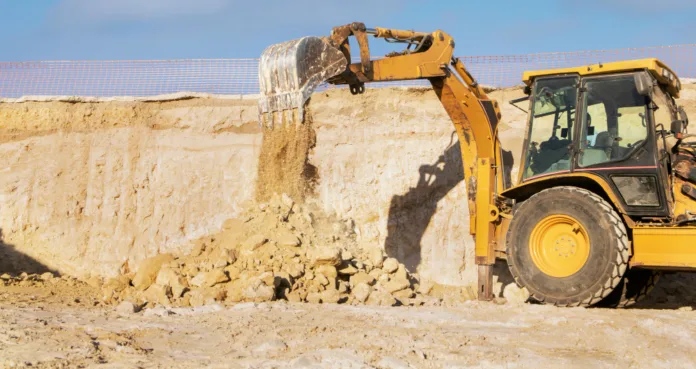Mining and quarrying activities fuel a 1% growth in Saudi Arabia’s industrial output, while food and chemical manufacturing also show significant expansion
Saudi Arabia industrial growth rose by 1% in August compared to the same period last year, driven by an increase in mining and quarrying. This growth underscores the Kingdom’s ongoing strides toward economic diversification. The latest figures from the General Authority for Statistics (GASTAT) reflect the country’s efforts to reduce its reliance on oil and build a robust industrial base under Vision 2030.
A key contributor to this growth was the mining and quarrying sector, which expanded by 0.8% year-on-year, primarily due to a slight increase in Saudi oil production. Oil output rose to 8.99 million barrels per day (bpd) in August, up from 8.92 million bpd a year earlier. This uptick helped push the Industrial Production Index (IPI) to 105 points for the month, signifying steady industrial expansion.
The manufacturing sector, another pillar of Saudi Arabia’s economic transformation, also showed positive momentum. Manufacturing activity increased by 1.1%, bolstered by a strong performance in the production of chemicals and food products. The chemicals sector saw a 2.9% rise, reflecting growing demand in both domestic and international markets, while food production surged by 12.9%, showcasing the Kingdom’s efforts to enhance self-sufficiency in key industries.
Balancing Growth Across Sectors
Embed from Getty ImagesDespite the overall growth, the manufacture of coke and refined petroleum products experienced a significant decline, dropping by 11.3% compared to last year. This decrease highlights the challenges faced by traditional fuel-related industries as global demand fluctuates in response to energy market shifts and sustainability initiatives.
However, other sectors showed resilience. The utilities sector, which includes electricity, gas, steam, and air conditioning supply, posted a 4.1% increase year-on-year. This growth reflects the rising demand for energy as industrial activities expand across the country. On the other hand, water supply, sewerage, and waste management services saw a slight decline of 0.9%, indicating potential areas for future improvement.
The Kingdom’s non-oil activities recorded strong growth, surging 7% in August compared to the previous month. This contrasts with a 1.4% drop in oil-related output, further underscoring the importance of Saudi Arabia’s economic diversification strategy. While the country remains a major player in the global oil market, it is increasingly focused on developing sectors such as manufacturing, technology, and tourism to ensure long-term stability and growth.
Monthly Trends and Vision 2030 Goals
On a month-to-month basis, the overall IPI slipped by 0.3% from July to August, primarily due to a 1.8% decline in manufacturing output. Nevertheless, the mining and quarrying sector managed to post a 0.6% increase, further emphasising its pivotal role in the country’s industrial landscape.
Electricity, gas, steam, and air conditioning supply also saw a 1.7% increase from the previous month, while water supply, sewerage, and waste management activities rose by 1%. These figures indicate that while certain areas faced temporary setbacks, the broader trend remains positive.
Saudi Arabia’s Vision 2030, the ambitious blueprint for the country’s future, aims to diversify its economy by strengthening non-oil industries and attracting foreign investment. The steady growth in industrial production, particularly in sectors like chemicals, food production, and utilities, highlights the progress being made towards these goals.
The rise in food manufacturing is particularly significant as it reflects the Kingdom’s drive to enhance food security and reduce reliance on imports. By investing in domestic production capabilities, Saudi Arabia is positioning itself as a regional hub for food processing and distribution, in line with its broader economic objectives.
Challenges and Future Outlook
While the overall figures paint a picture of growth, challenges remain. The decline in the manufacture of coke and refined petroleum products suggests that some sectors are struggling to adapt to the changing global energy landscape. As the world moves towards renewable energy and sustainability, industries that rely on traditional fuels may need to innovate and diversify to remain competitive.
The slight month-on-month drop in the overall IPI also points to the need for continued focus on non-oil sectors. As Saudi Arabia transitions away from its historical dependence on oil, it will be crucial to maintain momentum in other areas of the economy. The government’s focus on infrastructure development, technology, and education will play a key role in ensuring sustainable long-term growth.
Looking ahead, the Kingdom is expected to continue its efforts to attract foreign investment and develop new industries. The rise in industrial production, particularly in the non-oil sector, is a promising sign that Saudi Arabia’s economic transformation is well underway. However, the road ahead will require continued commitment to innovation, adaptability, and investment in emerging industries.
